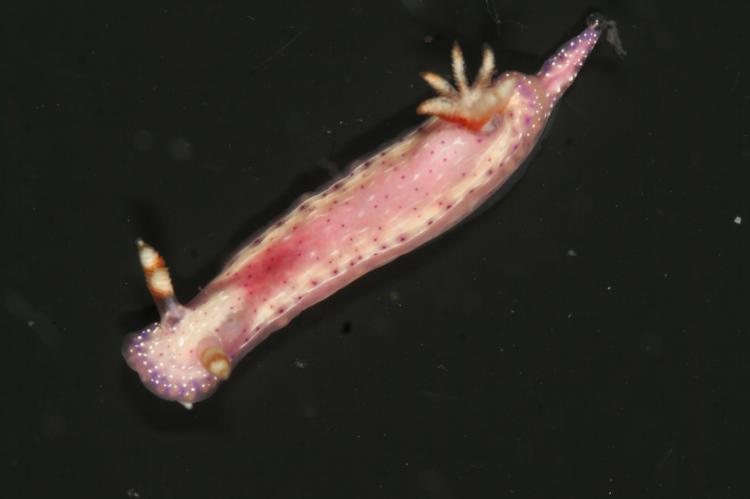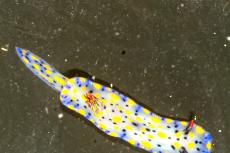Scientists describe 17 new species of nudibranchs
Researchers from the California Academy of Sciences who described the new-to-science sea slugs also identified a number of distant relatives that have independently evolved the same color pattern—a first-ever genetic confirmation that color mimicry is widespread in the sea slug world.
“Nudibranchs have always been a marine marvel with their dazzling color diversity,” says Academy curator Dr. Terry Gosliner, an invertebrate zoologist who’s discovered over one-third of all sea slug species known to exist. “We’re only beginning to understand the evolution of color. This is the first time we’ve had a family tree to test longstanding hypotheses for how patterns evolve.”
Color anomalies
When we find an anomaly in color pattern, we know there’s a reason for it,” says lead author Hannah Epstein, former Academy volunteer and researcher at James Cook University in Australia. “It reveals a point in evolution where a selective pressure—like predation—favored a pattern for camouflage or mimicking another species that may be poisonous to would-be predators.”
One such color anomaly was revealed in Hypselodoris iba, a species that crawls across Indonesian reefs in two strikingly different color patterns: one lavender with a white stripe, and one cream with a lavender stripe and orange spots. The two were thought to be different species until a diver took a photograph of them mating. The lavender version of Hypselodoris iba looked strikingly similar to another purple species common to the region, Hypselodoris bullocki. Genetic data later proved that the different-colored individuals represented the same species.
When we find an anomaly in color pattern, we know there’s a reason for it
“When two different species like H. iba and H. bullocki present in the same color, the simplest explanation is that they share a common ancestor,” says Johnson. “These two species, however, are pretty far apart on the family tree: the more likely explanation for their similar appearance is that they reside in the same geographic region where being purple is advantageous for avoiding predators either as camouflage or warning of distastefulness.”
Color trees
The team assembled a number of “color trees” within the Hypselodoris group to better understand how evolution determines sea slugs’ flashy wardrobes. They confirmed through genetic analysis several instances of species from distantly related groups evolving similar color patterns, a phenomenon known as convergent evolution.





